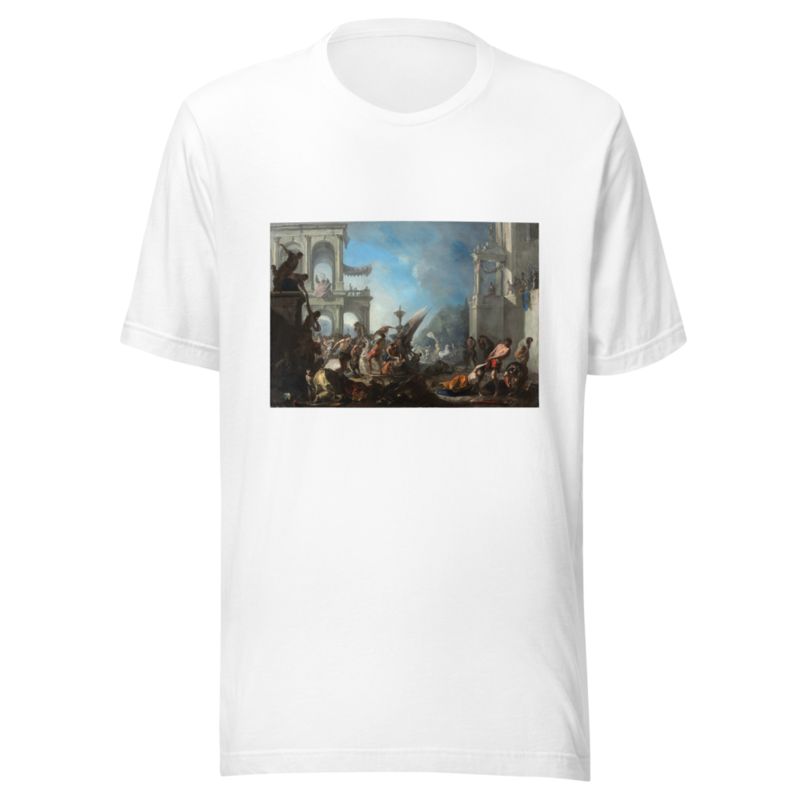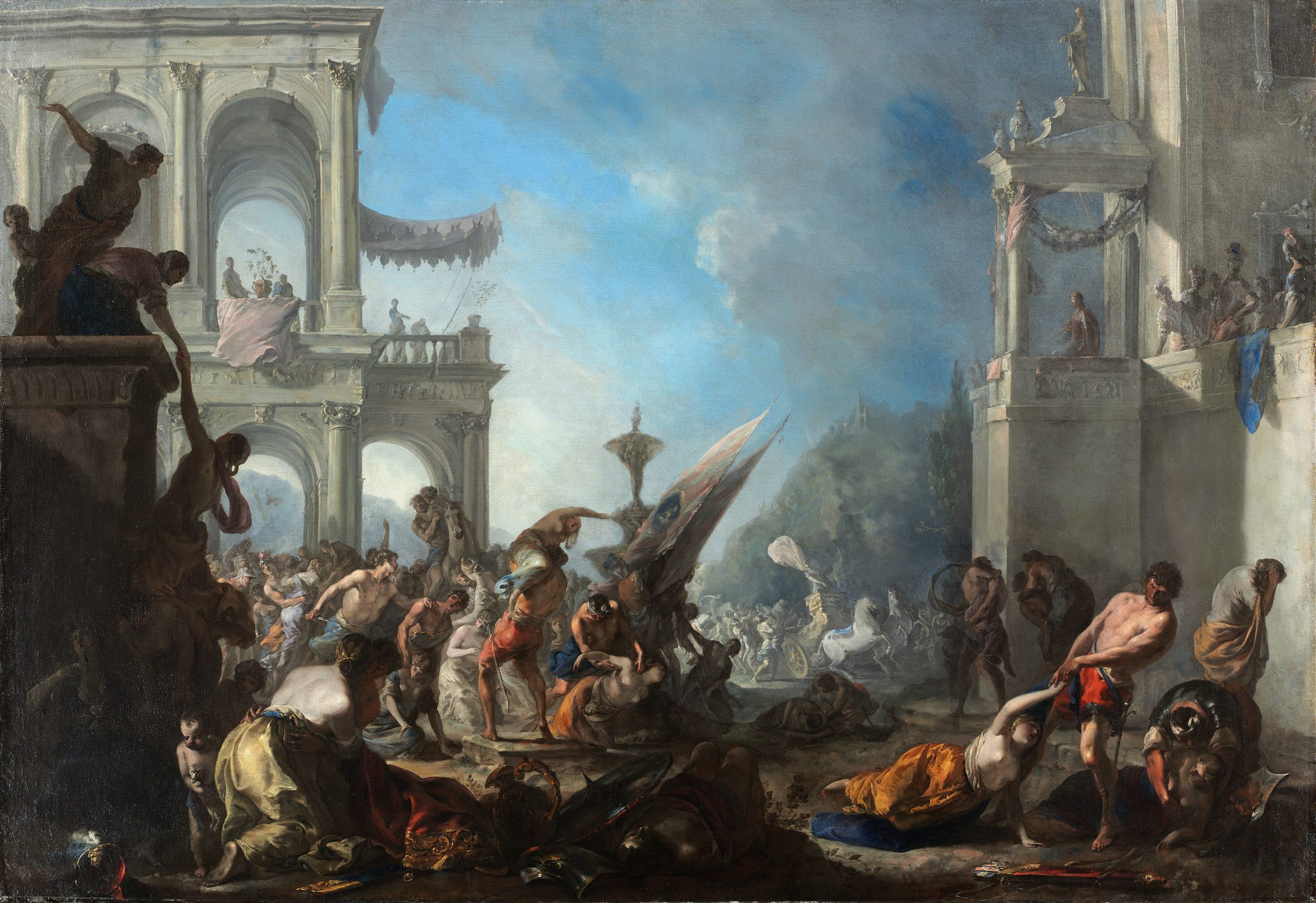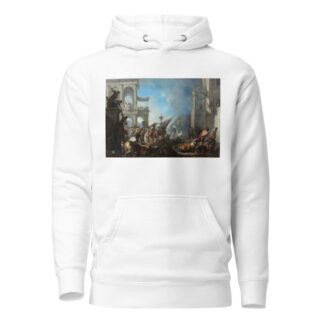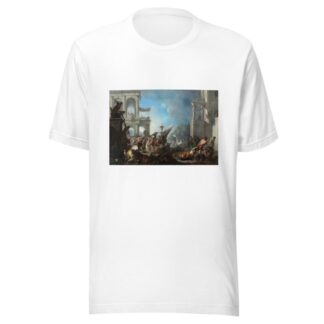Description
Abduction of The Sabine Women by Johann Heinrich Schönfeld printed on a T-Shirt
About the T-Shirt
Regular fit
Standard length, the fabric easily gives into movement
Casual wear
A classic, everyday option loved by our customers
Side-seamed
Constructed by sewing two parts together, creating a fitted look
The Unisex Staple T-Shirt feels soft and light with just the right amount of stretch. It’s comfortable and flattering for all. We can’t compliment this shirt enough–it’s one of our crowd favorites, and it’s sure to be your next favorite too!
- Solid colors are 100% Airlume combed and ring-spun cotton
- Ash color is 99% combed and ring-spun cotton, 1% polyester
- Heather colors are 52% combed and ring-spun cotton, 48% polyester
- Athletic and Black Heather are 90% combed and ring-spun cotton, 10% polyester
- Heather Prism colors are 99% combed and ring-spun cotton, 1% polyester
- Fabric weight: 4.2 oz./yd.² (142 g/m²)
- Pre-shrunk fabric
- 30 singles
- Side-seamed construction
- Tear-away label
- Shoulder-to-shoulder taping
- Blank product sourced from Nicaragua, Mexico, Honduras, or the US
Johann Heinrich Schönfeld (1609-1684)
Johann Heinrich Schönfeld was a German painter in the Baroque style.
He was the son of Johann Baptist Schönfeld (?-1635); a goldsmith. From birth, he was blind in his left eye and could only use his right hand for simple tasks, so he was not trained as a goldsmith, as would have otherwise been the case. Instead, he received lessons in painting from Caspar Sichelbein [de] in Memmingen. Later, he took study trips to Stuttgart and Basel.
In 1633, at the height of the Thirty Years’ War, he fled to Italy. Originally, he lived in Rome, then moved to Naples around 1649. After a brief stay in Dresden he returned home in 1651. The following year, in Pfuhl (near Ulm) he married Anna Elisabetha Strauß. They had eight children together. Shortly after their marriage, they moved to Augsburg, where he became a citizen and a member of the Master’s Guild.
In the following years, he created many church paintings; notably at Würzburg Cathedral, where he painted Christ carrying the Cross and a likeness of Saint Leonard of Noblac. Both paintings burned during the bombing of Würzburg in World War II.. In addition to religious works, he painted mythological and genre scenes.
One of his best-known students was Johann Schmidtner.






Reviews
There are no reviews yet.